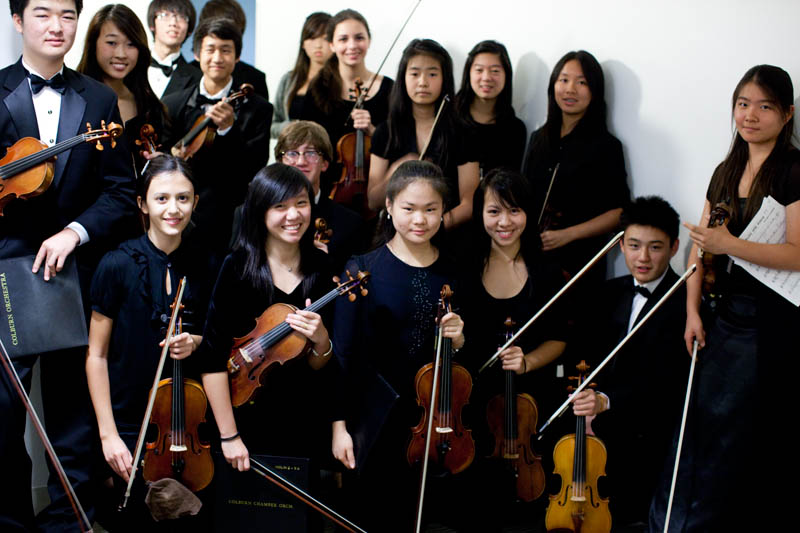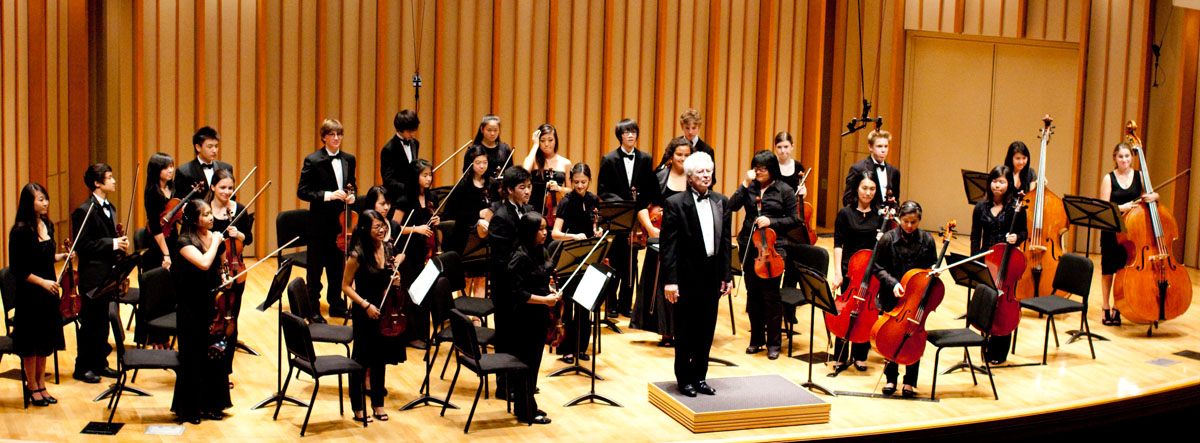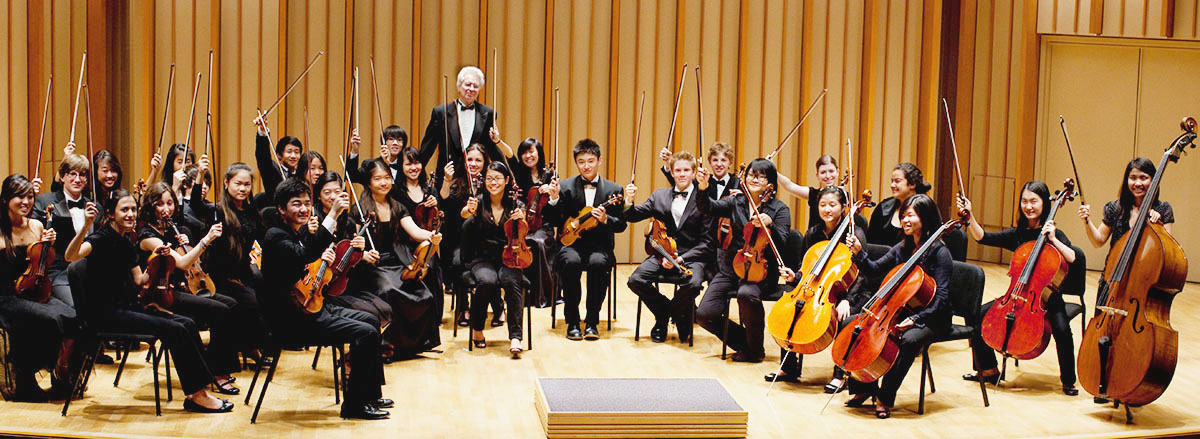Asher Kelman
OPF Owner/Editor-in-Chief
The mere existence of chamber orchestras in 2009 is anyway remarkable. That it's made up of talented young adults and mere school kids is even more surprising. After all, the rich classical music they come together to play has won out over so many competing demands on their crowded schedules. That's the homework, friends, Playstation IIII, watch TV, roller skate, surf when the tides up and every other interesting activity.
The glue of the orchestra is the passion for music. The conductor and music director of The Colburn Chamber Orchestra is the renowned cellist and pedagogue, Ronald Leonard. He was formerly First Cellist and the Los Angeles Philharmonic and played at the Walt Disney concert Hall, one of the best performance locations in the USA.
There's no way to prepare for anything with the orchestra as no one has spare time. So it's grab as one goes. So I started by ambushing them backstage as they were arriving with their instruments

Not all musicians will go for a picture being taken before a performance as they might have a routine of focus that they won't break. One such guy just ignored the photography and remained seated thinking about the upcoming performance he had to give with his violin.

One time one can take picture without disturbing anyone is here, just before the performance starts and then during the applause.

After the program is over, there's a routine. Some make a bee-line for the exit and others go to meet well-wishers, family and friends, faculty, philanthropists and fans waiting to congratulate them at the stage door. It's startling for a photographer to see the entire stage like an abandoned battlefield with stands and chairs no longer neatly arranged and an occasional music score left behind. That empty untidy stage lit from above is particularly upsetting since this is the time that everyone is rejoicing and the mood shows on their faces. So, I literally had to recruit the fleeing students back from packing their instruments to get some more pictures for the record and various publications the School might need images for. Then we had some fun. This was shot within a span of just about ten minutes including solo performance pictures by those who could stick around.

Now we get the musicians after the performance and there's no longer any tension.
The glue of the orchestra is the passion for music. The conductor and music director of The Colburn Chamber Orchestra is the renowned cellist and pedagogue, Ronald Leonard. He was formerly First Cellist and the Los Angeles Philharmonic and played at the Walt Disney concert Hall, one of the best performance locations in the USA.
There's no way to prepare for anything with the orchestra as no one has spare time. So it's grab as one goes. So I started by ambushing them backstage as they were arriving with their instruments

Not all musicians will go for a picture being taken before a performance as they might have a routine of focus that they won't break. One such guy just ignored the photography and remained seated thinking about the upcoming performance he had to give with his violin.

One time one can take picture without disturbing anyone is here, just before the performance starts and then during the applause.

After the program is over, there's a routine. Some make a bee-line for the exit and others go to meet well-wishers, family and friends, faculty, philanthropists and fans waiting to congratulate them at the stage door. It's startling for a photographer to see the entire stage like an abandoned battlefield with stands and chairs no longer neatly arranged and an occasional music score left behind. That empty untidy stage lit from above is particularly upsetting since this is the time that everyone is rejoicing and the mood shows on their faces. So, I literally had to recruit the fleeing students back from packing their instruments to get some more pictures for the record and various publications the School might need images for. Then we had some fun. This was shot within a span of just about ten minutes including solo performance pictures by those who could stick around.

Last edited:
